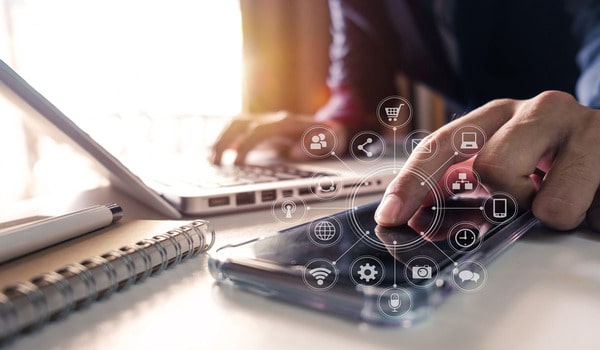
Off-site personalization of the customer experience makes it engaging and enables us to create successful e-commerce. Let’s see together how.
The Covid-19 pandemic and the ensuing health emergency had an unprecedented socio-economic impact, in our country, but not only: the lockdown, first, and the various measures put in place to contain the spread of the virus, then, radically changed the way consumers relate to brands.
If before the pandemic, 78 percent of consumers spent in a physical store at least three times a week, with the spread of the pandemic, the percentage has dropped to 34 percent. As shopping habits and behaviors change, the potential of digital, an indispensable tool for working, learning, being entertained, and above all, shopping, is discovered.
Here, in such a context, personalization of the customer experience takes on an even more crucial role, and becomes essential for any brand to:
- Putting in place effective cross-selling and upselling strategies
- To improve customer retention
- To increase customer satisfaction
Let’s look at it in detail:
- Personalized and valuable customer experiences, even off-site!
- Email marketing: seduce your users with personalized content
- From website to social channels and ADS for a unique experience
- Mobile first: from SMS to notifications in APPs
Personalized and valuable customer experiences, even off-site!
According to data released by an Accenture study, 75% of consumers generally admit they are more likely to buy from a company that recognizes them by name, knows their purchase history, and recommends products based on what they have previously chosen.
Here then, brands that choose to invest in customer experience bill on average 5.7 times more than those that do not and show 60% more profitability.
But personalization of the customer experience does not end only with the browsing experience within the site or eCommerce but also continues outside.
Therefore, it is important to be able to establish a relationship with the customer that crosses different channel boundaries and is fluid and unambiguous in every touchpoint, both physical and digital.
In the previous article published in our blog, we looked in detail at some of the pivotal activities to be put in place to personalize the user’s browsing experience within the site.
Now, let’s review some key features for off-site customization. In particular:
- newsletters and emails
- posts and social campaigns
- SMS
- In app notifications.
Email marketing: seduce your users with personalized content
The number of active email accounts in Italy exceeds the number of inhabitants, and there are about 30 emails that each Italian receives on average every day: newsletters and emails are thus confirmed as one of the tools that are still most widely used even for marketing purposes, especially with the spread of mobile, and perhaps one of the most effective, provided, however, that it is used in the best possible way.
Here is where personalization of messages and content becomes crucial to a winning email marketing strategy, and although, even today many companies opt for mass newsletter mailings, it is in audience profiling and segmentation that the game is played.
There are numerous ways in which we can choose to approach our users by conveying to them a sense of exclusivity and immediacy typical of one-to-one communications and more personal relationships:
- personalized welcome emails,
- birthday newsletter,
- abandoned trolley recovery email,
- newsletters with personalized offers from an up-selling and cross-selling perspective based on previous purchases made, personalized content and recommendations based on browsing history.
It is only in this way that email marketing can turn into an effective user retention tool.
From website to social channels and ADS for a unique user experience
A user’s experience involves an increasing number of touchpoints, among which we certainly cannot forget social and ADS channels. From Facebook to Instagram to Google, just to name the most popular platforms, these channels are now an integral part of every company’s marketing strategies and tend to be used strategically at various stages of the sales funnel, from awareness to purchase.
Here then, with the contribution of marketing automation and artificial intelligence, it is possible to deploy an effective profiling strategy and use the identified audiences not only as targets for personalized campaigns but also for ad-hoc created content. Recommended products, personalized ads based on the user’s browsing history, but not only: personalization of the customer experience can move from the site to off-site channels but also from these channels to the site itself, allowing content to be created within the latter that is in line and consistent with that presented in the campaigns themselves.
Mobile first: from SMS to notifications in APPs
Mobile devices are now an integral part of our daily lives, and for most consumers they are the first touchpoint for browsing and shopping. Personalized content, but above all tailored offers: SMS is an effective tool both for reengaging users once they have left the site, but also for deploying effective drive-to-store campaigns aimed at incorporating stores into a successful omnichannel strategy.
And while SMS is still an effective marketing channel, more and more users are choosing to purchase directly in APPs. Here, too, personalization plays a crucial role both in terms of recommended products and specially created content.
If you make customers unhappy in the physical world, any one of them could tell six friends. If you make customers unhappy on the Internet, they can tell six thousand friends ,” said Amazon founder Jeff Bezos.We just have to learn from the best and put the customer at the center of our strategies.




